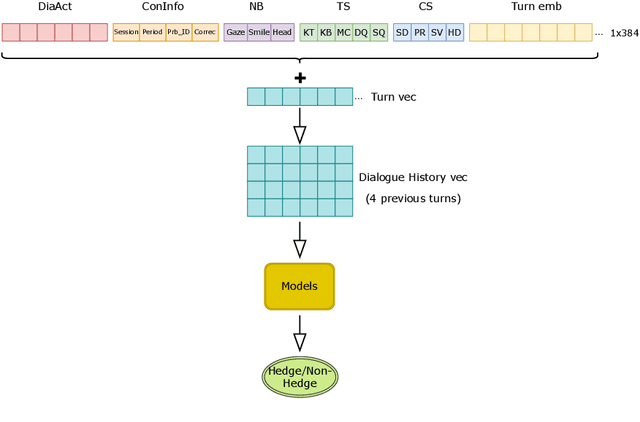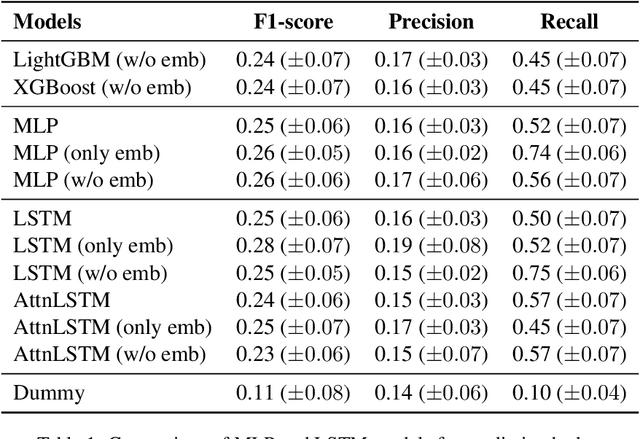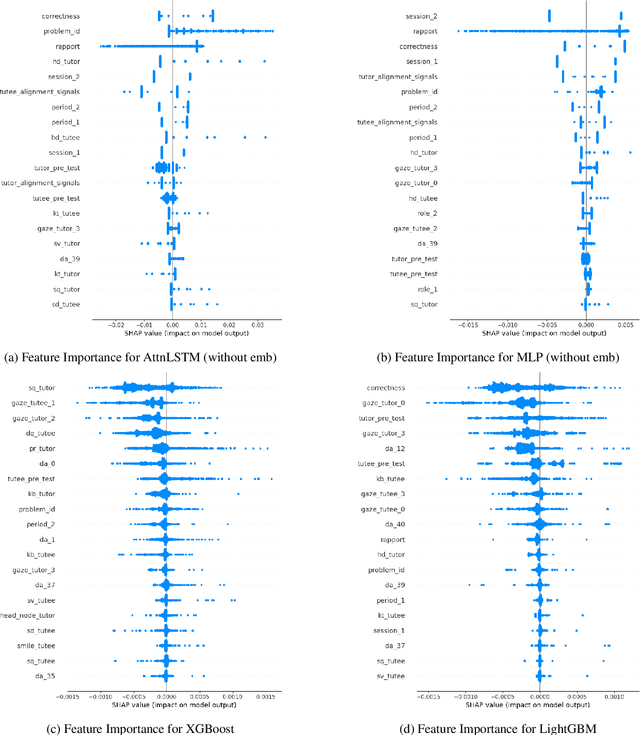Alafate Abulimiti
When to generate hedges in peer-tutoring interactions
Jul 28, 2023



Abstract:This paper explores the application of machine learning techniques to predict where hedging occurs in peer-tutoring interactions. The study uses a naturalistic face-to-face dataset annotated for natural language turns, conversational strategies, tutoring strategies, and nonverbal behaviours. These elements are processed into a vector representation of the previous turns, which serves as input to several machine learning models. Results show that embedding layers, that capture the semantic information of the previous turns, significantly improves the model's performance. Additionally, the study provides insights into the importance of various features, such as interpersonal rapport and nonverbal behaviours, in predicting hedges by using Shapley values for feature explanation. We discover that the eye gaze of both the tutor and the tutee has a significant impact on hedge prediction. We further validate this observation through a follow-up ablation study.
* In Proceedings of the 16th Annual Conference ub Discourse and Dialogue (SIGDIAL). Sept 11-15, Prague Czechia
Different Games in Dialogue: Combining character and conversational types in strategic choice
Jul 05, 2023Abstract:In this paper, we show that investigating the interaction of conversational type (often known as language game or speech genre) with the character types of the interlocutors is worthwhile. We present a method of calculating the decision making process for selecting dialogue moves that combines character type and conversational type. We also present a mathematical model that illustrate these factors' interactions in a quantitative way.
How About Kind of Generating Hedges using End-to-End Neural Models?
Jun 26, 2023



Abstract:Hedging is a strategy for softening the impact of a statement in conversation. In reducing the strength of an expression, it may help to avoid embarrassment (more technically, ``face threat'') to one's listener. For this reason, it is often found in contexts of instruction, such as tutoring. In this work, we develop a model of hedge generation based on i) fine-tuning state-of-the-art language models trained on human-human tutoring data, followed by ii) reranking to select the candidate that best matches the expected hedging strategy within a candidate pool using a hedge classifier. We apply this method to a natural peer-tutoring corpus containing a significant number of disfluencies, repetitions, and repairs. The results show that generation in this noisy environment is feasible with reranking. By conducting an error analysis for both approaches, we reveal the challenges faced by systems attempting to accomplish both social and task-oriented goals in conversation.
 Add to Chrome
Add to Chrome Add to Firefox
Add to Firefox Add to Edge
Add to Edge